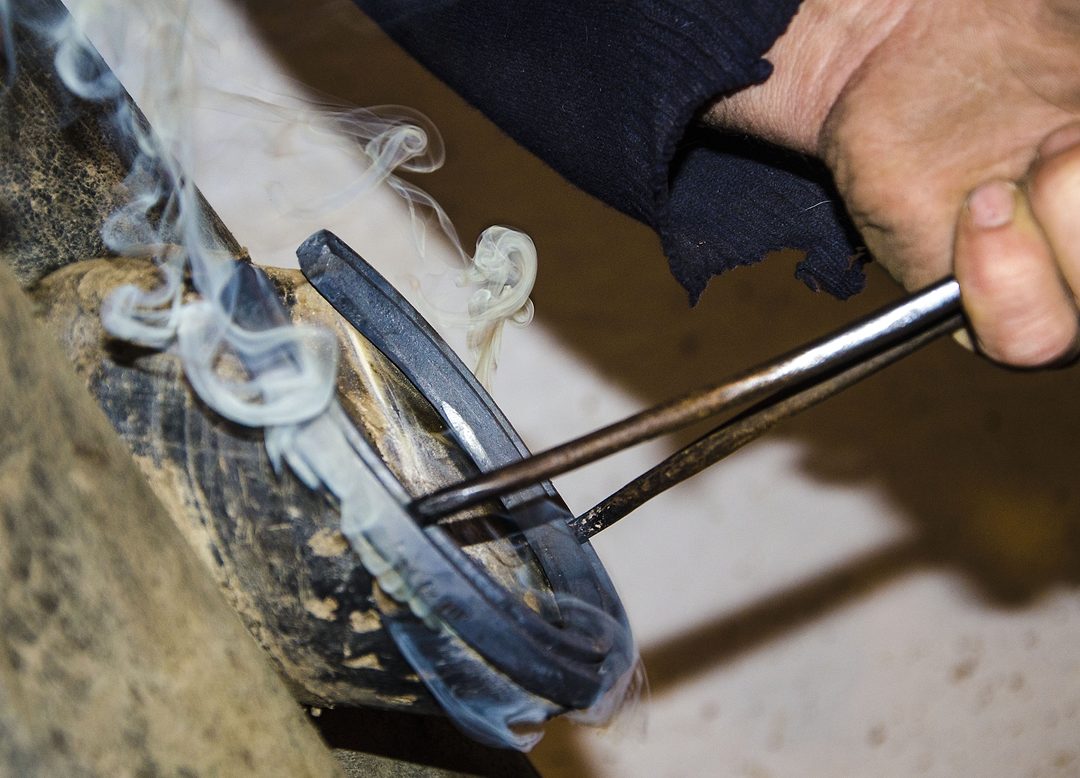There’s a popular belief that hot shoeing doesn’t harm a horse. However, that’s not necessarily true.
A horse certainly won’t feel it when hot shoeing is performed correctly; however, it’s easy to do it improperly, says Carbondale, Ill., farrier John Voigt.
“The common mistake I see — and I’ve made them all — is it’s easy to over burn them and get into the soles so that you have sole pressure,” says the American Farrier’s Association certification examiner in Region 3. “It’s like the farrier who says he’s never quicked a horse — he’s never shod one.”
Over burning is particularly concerning when you’re hot-fitting a flat-footed horse.
“You need to be very conscious when you’re trying to burn a seat for a clip into the wall,” Voigt says. “You certainly don’t want to sear it into the sole. It’s pretty easy to get sole pressure when you have a flat-footed horse.”
What’s important to keep in mind is that your shoe doesn’t have to be glowing to achieve a good burn.
“You can get caught up in a cloud of smoke, but really the proper shoe temperature to go to the foot with for clip fitting is a black heat,” he advises. “The color that’s left in the shoe is a very important factor. If the shoe is an orange or even a red, you should not be going to the foot with it. You get to a black heat, you’ve leveled your shoe, you’ve pitched your clips in; there’s still plenty of heat in that shoe to complete your burn. If you put the shoe on black, you don’t get quite as much smoke.”
The equine foot has sensitive and insensitive areas and since the sole transmits heat, you have to use care while hot fitting.
“If your sole is pared correctly, you should not have any or maybe up to 1/8 of an inch of shoe in contact with the sole,” Voigt says. “If the sole transmits enough heat, then sooner or later the horse is going to feel it.”
For more tips, read “What Makes A Good Clip?” in the January/February 2017 issue of American Farriers Journal.








